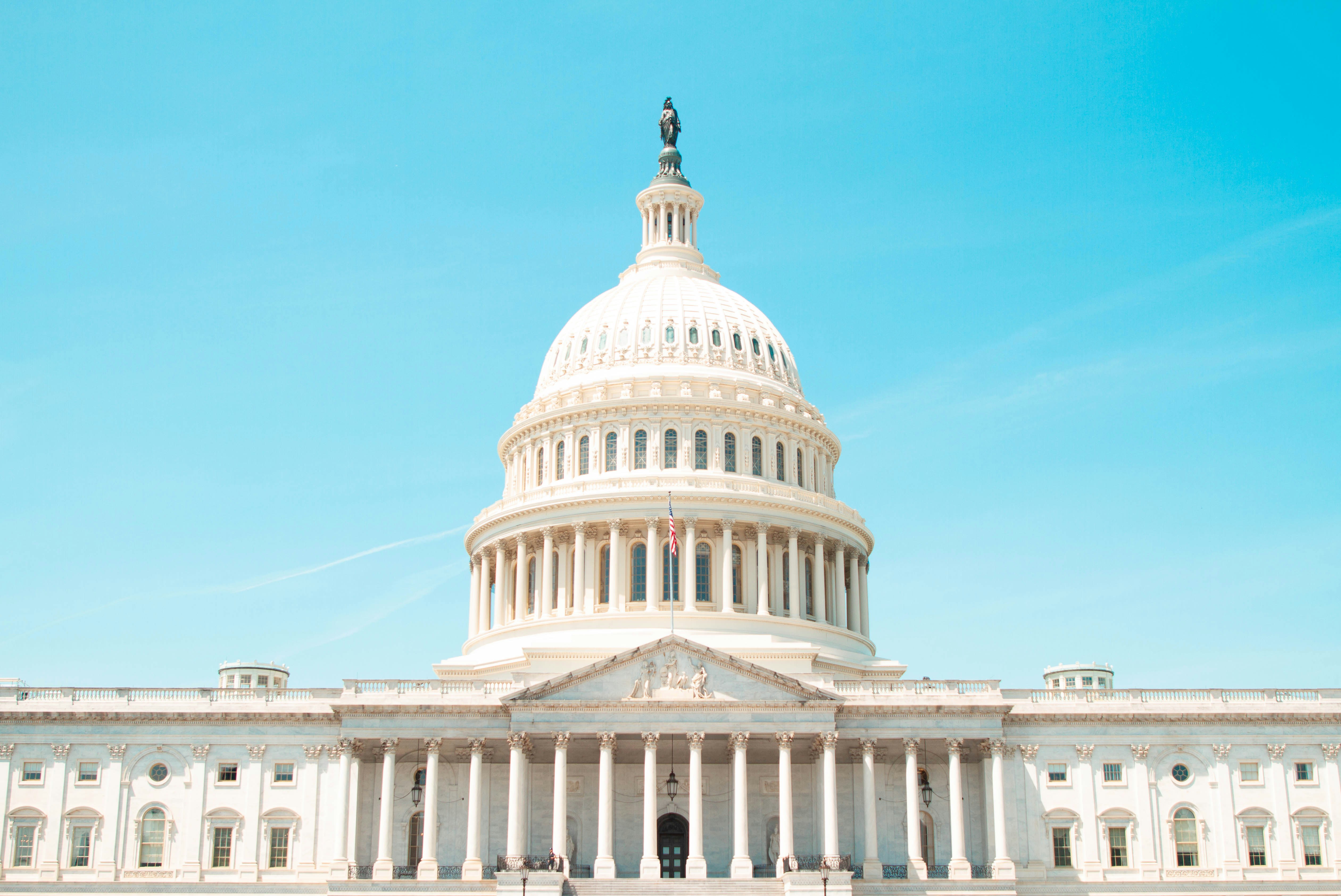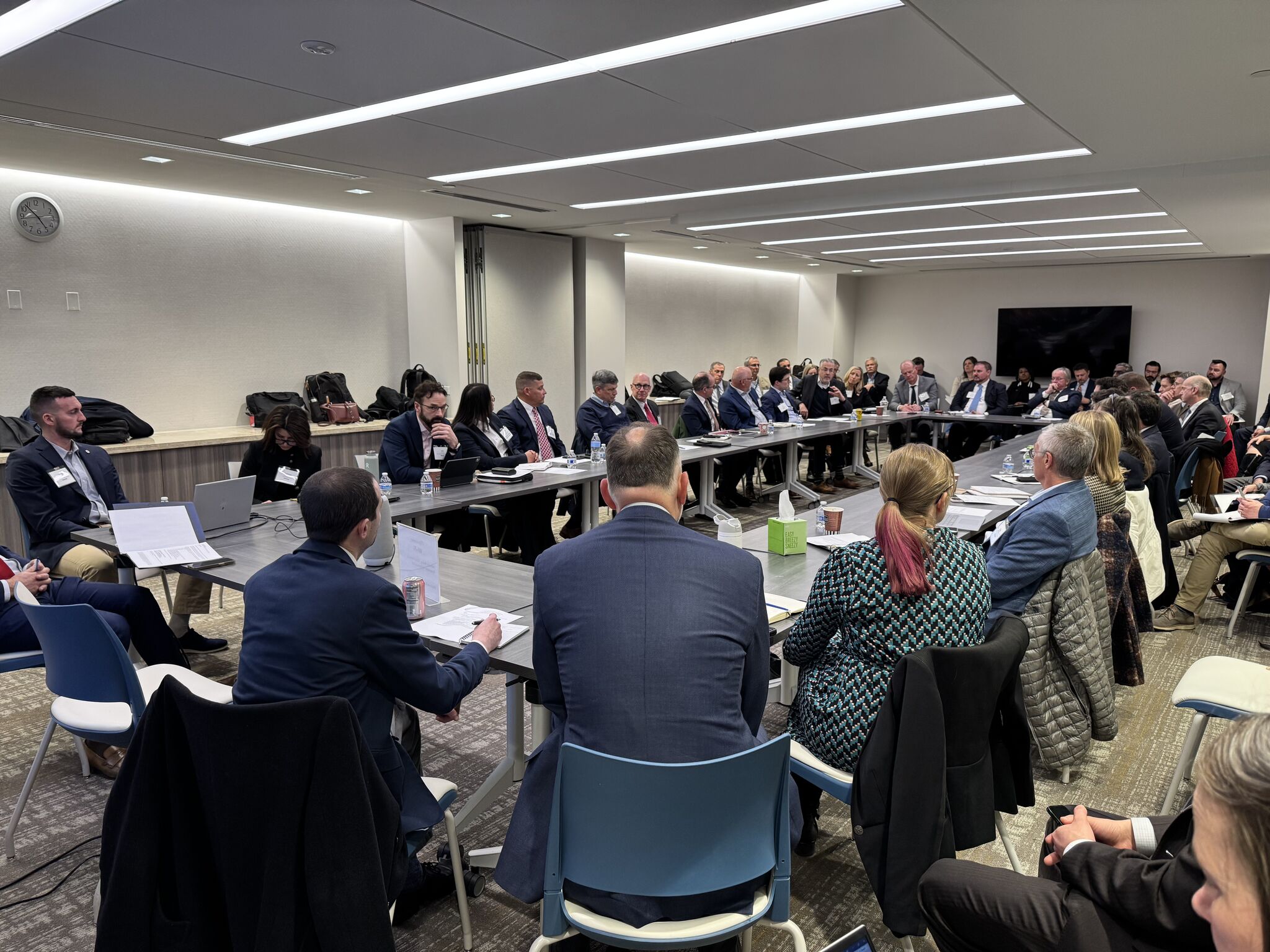Biden Admin Advances US Infrastructure, Clean Energy Plans

During the previous Administration, important projects stalled; Under the Biden-Harris Administration, projects are moving more quickly
President Biden’s Investing in America agenda is making once-in-a-generation investments in America’s infrastructure and our clean energy future that are creating good-paying and union jobs, establishing and growing new industries in the United States, tackling the climate crisis, and helping lower costs for families.
To deploy these investments, the Biden-Harris Administration has taken aggressive action to accelerate project permitting and environmental reviews. The Administration has developed and is currently executing a Permitting Action Plan; secured $1 billion from the Inflation Reduction Act to improve permitting; passed important reforms in the 2023 Fiscal Responsibility Act that made commonsense changes to the environmental review process, including setting deadlines for completion of reviews and making documents more readable by limiting their length; and took a number of administrative actions to simplify and accelerate the permitting process. By taking these actions, the Administration is ensuring that industry can move forward with key investments and projects, including building out clean energy and transmission, while also being responsible stewards of the environment and protecting communities.
The Administration’s focus on reforming federal permitting has led to real results. Thanks to President Biden’s leadership, the time to complete the most extensive form of environmental review is already coming down: agencies are completing a higher proportion of environmental impact statements in under two years than under the previous Administration. The Biden-Harris Administration is also completing environmental assessments for projects faster than the previous Administration – for example, data from the Department of Transportation show that in the first three years, the Biden-Harris Administration completed environmental assessments in an average of 9.6 months compared to 15.4 months for the same number of projects during the Trump Administration.
The Biden-Harris Administration is also expanding the use of categorical exclusions, the fastest form of environmental review, bringing review timelines down from months or years to a matter of weeks for projects that have minimal environmental impacts. For example, over 99.5% of federal highway projects were covered by categorical exclusions in fiscal year 2022, meaning the vast majority of projects are moving forward using these faster reviews. The Administration has also expanded the use of categorical exclusions to expedite permitting in key sectors such as EV charging, broadband, CHIPS manufacturing, and clean energy projects.
In addition, the Biden-Harris Administration has surpassed a major renewable energy permitting goal more than 18 months ahead of schedule, with the Department of the Interior (DOI) having permitted more than 25 gigawatts of clean energy projects on public lands well before a 2025 target date. DOI has also already approved the nation’s first 10 gigawatts of large-scale offshore wind projects, in support of the President’s goal of deploying 30 gigawatts of offshore wind by 2030.
The Administration is continuing to develop new tools to expedite permitting of critical infrastructure, semiconductor manufacturing, and clean energy projects. Today the White House Council on Environmental Quality (CEQ) is finalizing the Bipartisan Permitting Reform Implementation Rule, which simplifies and modernizes the federal environmental review process while fully implementing the new efficiencies Congress passed in the Fiscal Responsibility Act.
The actions outlined below reflect the all-of-government effort the Biden-Harris Administration has taken to accelerate federal permitting across seven key sectors – offshore wind, onshore renewables, transmission, transportation, semiconductors, broadband, and critical minerals – while ensuring strong environmental protections and robust community engagement.
Finalizing the Bipartisan Permitting Reform Implementation Rule
Modernizing federal environmental reviews. The Bipartisan Permitting Reform Implementation Rule fully implements new efficiencies in agency environmental reviews under the National Environmental Policy Act (NEPA) that the Administration negotiated on a bipartisan basis and secured in the Fiscal Responsibility Act of 2023. These efficiencies include setting clear one- and two- year deadlines for agencies to complete environmental reviews, requiring a lead agency and setting specific expectations for lead and cooperating agencies, and creating a unified and coordinated federal review process. The rule also provides agencies with other new and faster tools to improve the efficiency and effectiveness of environmental reviews. Together, these reforms will help accelerate America’s clean energy future, rebuild our nation’s infrastructure, strengthen our nation’s energy security, and deliver on the President’s Investing in America agenda.
- Improve efficiency and speed: The rule accelerates the deployment of clean energy, transmission, clean water, broadband, semiconductor manufacturing, and other crucial infrastructure by setting clear environmental review deadlines (generally no more than two years for environmental impact statements and one year for environmental assessments) and page limits as directed by the Fiscal Responsibility Act. Additional efficiencies include establishing new and more flexible methods for agencies to establish categorical exclusions to speed up projects without significant adverse effects – from geothermal exploration to vehicle charging infrastructure installation – and enabling lower levels of environmental review to accelerate approvals when a project sponsor or agency has opted to mitigate the effects of the project.
- Addressing multiple priorities simultaneously rather than consecutively: Consistent with the Fiscal Responsibility Act, the rule expands the use of programmatic environmental reviews, which allow agencies to review the environmental impacts of categories of projects to speed up approvals for specific projects. This will help speed the build-out of everything from semiconductor manufacturing to clean energy projects. The rule also promotes the use of shared environmental analysis to discourage duplication of effort.
- Advance stronger environmental outcomes: The rule addresses climate change, protects public health, and encourages better environmental outcomes by clarifying that agencies should consider climate change effects in environmental reviews and encourage identification of reasonable alternatives that will mitigate climate impacts. These provisions will help to ensure approvals are not only timely, but durable, because when environmental reviews are done right the first time, they won’t have to be redone later on and are less likely to face successful legal challenges.
- Promote meaningful public input and best practices: The rule helps ensure projects are built smart from the start by promoting early and meaningful engagement with communities, fostering community buy-in, reducing or avoiding conflict, and improving project design. The rule helps ensure projects are on a strong legal footing incorporating longstanding case law and best practices for collaboration and coordination across agencies, helping ensure projects move forward efficiently and with more certainty to deliver benefits to communities, workers, and project developers. Consistent with current best practices, it also directs agencies to consider environmental justice.
Reducing Bottlenecks Across Seven Key Sectors and Getting Results with Projects
Accelerating transmission projects. Last week, the Biden-Harris Administration finalized the Coordinated Interagency Transmission Authorizations and Permits (CITAP) rule that will help improve the efficiency of the federal permitting and authorization process for qualifying onshore transmission facilities. The Department of Energy (DOE) CITAP program gives transmission developers a new option for a streamlined federal review process with a standard two-year schedule that can cut prior timeframes in half for the most complex environmental reviews. For projects that use existing transmission rights-of-way, such as advanced reconductoring or siting solar or storage projects on previously developed areas, last week the DOE also announced new categorical exclusions, the most expedited form of environmental reviews, which enables speedier DOE reviews for projects that have minimal impact on the environment and public health. These recent steps build on recent project-specific progress, such as:
- SunZia Southwest Transmission Project: This project will transport up to 4,500 megawatts of primarily renewable energy from New Mexico to markets in Arizona and California. After prior reviews and changes to the project route, the Bureau of Land Management (BLM) completed the review for the permitted route in less than two years from notice of intent to record of decision, announcing approval in May 2023.
Speeding up renewable energy development on federal lands. In April, DOI finalized a rule that facilitates efficient and responsible renewable energy development by reducing fees for solar and wind projects on public lands by 80 percent-with additional incentives for use of project labor agreements and American-made materials. The rule also streamlines the process for the BLM to review applications in priority areas and delivers greater predictability for industry on how the BLM will issue and manage future leases for solar and wind development. This rule complements the BLM’s ongoing efforts to update the Western Solar Plan through a Utility-Scale Solar Programmatic Environmental Impact Statement, with the goal of further streamlining the framework for siting solar energy projects. Also in April, the BLM adopted categorical exclusions from the U.S. Forest Service and Department of the Navy to expedite the review and approval of geothermal energy exploration on public lands. These actions will help clean energy projects get permitted more quickly. The BLM continues to track progress through an online dashboard. In addition to this work, several projects are moving forward including:
- Dry Lake East Energy Center Solar Project: Earlier this month, the BLM announced approval of this solar and storage project in the Las Vegas region designed to generate up to 200 megawatts of clean electricity for the Nevada grid. BLM started an environmental assessment in 2023 and the project was approved a year later in 2024.
- Cape Station Exploration Drilling Geothermal Energy Project: Cape Station is a geothermal energy project set to deliver 400 megawatts of carbon-free electricity in Beaver County, Utah. BLM completed the environmental assessment for the project within three months working closely with the developer, nearby communities, and state, county and local governments.
Accelerating offshore wind permitting and delivering the nation’s first large-scale projects. Last week DOI announced a final rule that is expected to save offshore wind developers about $1.9 billion over 20 years by modernizing regulations for renewable energy development. DOI’s Bureau of Ocean Energy Management (BOEM) is also developing programmatic environmental impact statements for the New York Bight and California offshore wind lease areas, to streamline individual project reviews. Additionally, BOEM and the National Oceanic and Atmospheric Administration issued a joint strategy to protect and promote the recovery of endangered North Atlantic right whales while responsibly developing offshore wind energy, and are deploying Inflation Reduction Act funding and working with industry and environmental stakeholders to advance whale detection and monitoring technologies.
These efforts will help continue a strong track record of responsible permitting progress. BOEM has already issued approvals for eight commercial-scale offshore wind projects-up from zero approved when President Biden took office. These eight project approvals total more than 10 gigawatts of offshore wind energy, enough to power nearly four million homes. South Fork Wind off New York recently finished construction, Vineyard Wind off Massachusetts has delivered its first power, and several other projects are expected to have construction milestones this year. An example project:
- Coastal Virginia Offshore Wind: Under the Biden-Harris Administration, the Coastal Virginia Offshore Wind project completed all federal reviews and authorizations, including a record of decision from BOEM in October 2023, roughly 10 months faster than the Vineyard Wind and South Fork projects, which initiated review in 2018 under the previous Administration and did not reach approval until 2021 under this Administration.
Accelerating construction of high-speed internet projects. In March, the Advisory Council on Historic Preservation extended a process for faster historic preservation reviews for communications infrastructure projects on federal lands to all such projects both on and off federal lands. This action will shorten historic preservation reviews from over a year to less than three months. In addition, in April, the Department of Commerce’s National Telecommunications and Information Administration (NTIA) established and adopted a total of 36 new categorical exclusions that will unlock faster reviews for projects that do not have significant environmental effects. NTIA also developed and released a permitting and environmental mapping tool to help grant recipients and others deploying infrastructure for high-speed Internet service to identify permit requirements and avoid potential environmental impacts. In addition, also in April, DOI issued a final rule to streamline approvals of broadband projects on BLM managed lands. Other projects are moving forward, such as:
- DMCI Broadband: In October 2022 the U.S. Department of Agriculture awarded $6 million-through President Biden’s Bipartisan Infrastructure Law-to DMCI broadband in Michigan to be used to deploy a fiber-to-the-premises network to connect 2,899 people, 94 farms, 56 businesses, and four educational facilities to high-speed internet in Branch and Hillsdale counties in Michigan. After being awarded funding in 2022, the environmental review and approval took less than two months.
Executing on environmental reviews for CHIPS Act-funded semiconductor fabrication plants. The Department of Commerce quickly took action, building an environmental team for the CHIPS office, which has adopted 11 categorical exclusions from the Department of Energy and initiated a programmatic environmental assessment that will enable qualifying projects to quickly move through necessary environmental approvals. An example project:
- BAE Systems: In December 2023, BAE Systems Electronic Systems signed a non-binding preliminary memorandum of terms (PMT) for approximately $35 million in federal incentives under President Biden’s CHIPS and Science Act to support the modernization of the company’s Microelectronics Center in Nashua, New Hampshire. The project will replace aging tools and quadruple the production of chips necessary for critical defense programs. This project completed environmental review in just 31 days using a categorical exclusion.
Streamlining critical mineral permitting: Last year, the Permitting Council announced the first mining project that will receive FAST-41 coverage. FAST-41 coverage will allow critical mineral projects – which are vital to the clean energy transition – to apply for FAST-41 permitting assistance and benefit from facilitated coordination between the project sponsor, the lead agency, and the other Federal agencies that will play a cooperating role on the project’s environmental review. This ensures the project has a clear timetable and coordinated approvals process. Other mining projects are moving forward, including:
- Gibellini Vanadium Mine: The Gibellini Project, located in Eureka County, Nevada, will help provide the critical mineral vanadium, which is an important component in lightweight steel and has the potential to increase the life and reduce the cost of batteries when used in utility-scale wind and solar projects. This was the first primary vanadium mine to be permitted in the United States.
Accelerating and streamlining permitting for transportation projects. To expedite the environmental review of federally-funded electric vehicle (EV) charging station sites, the Department of Transportation (DOT) adopted a DOE EV charging station categorical exclusion, accelerating environmental review processes for state and local governments seeking to build EV charging infrastructure. The Advisory Council on Historic Preservation also exempted most federally-funded or federally-permitted EV charging infrastructure from historic preservation reviews because it found that the effects of these activities are known and not significant. Earlier this month, DOT also announced its Modernizing NEPA Challenge to encourage project sponsors to publish interactive environmental review documents that increase accessibility, transparency and use plain language. These online tools will save time and improve the quality of documents through collaborative, real-time reviews between the public and agencies participating in a project’s environmental review process. Other projects are moving forward, including:
- Gateway Hudson Tunnel Project: This project, funded by the Bipartisan Infrastructure Law, will construct a new Hudson River Tunnel between New York and New Jersey and rehabilitate the 110-year-old rail tunnel that carries 200,000 passenger trips per day on New Jersey Transit and Amtrak along the Northeast Corridor. When the Obama Administration started the environmental review for this project it was slated to be finished in less than two years, but the previous Administration sat on the final review. The review was completed within the first five months of the Biden-Harris Administration and construction broke ground in 2023 on both sides of the Hudson River.
Investing in the Resources for Success
Thanks to President Biden’s Inflation Reduction Act, the Administration has had the opportunity to bring on the staff and begin development of the technology needed to execute and streamline permitting and environmental reviews.
The Administration quickly deployed additional resources to hire the Federal staff needed to achieve our permitting goals. Twelve agencies covering all seven sectors received funding to hire the necessary personnel. To date, the Permitting Council has allocated over $165 million from President Biden’s Inflation Reduction Act appropriation to support federal agencies, including through staff positions that will help deliver more timely and efficient reviews and permits. Together we have increased the permitting workforce by 14%. In addition, the Permitting Council has made $5 million available to Tribal governments to support Tribal engagement in the environmental review and authorization process for FAST-41 covered projects.
Adopting new technology and tools to improve federal environmental review and permitting processes. Timely, informative environmental reviews that are guided by the best available science and help deliver positive environmental and community impacts will be improved with better technology. Yesterday, the Permitting Council announced $30 million in investments to agencies to help them complete timely environmental reviews and permits. These investments will facilitate meaningful public involvement and support agencies to better manage complex analysis and decision-making.
Promoting Stakeholder Engagement and Positive Community Outcomes
The Biden-Harris Administration is committed to ensuring strong environmental protections and robust community engagement as it works to accelerate federal permitting. In line with the President’s commitment to environmental justice, the Administration is working to ensure projects are built smart from the start by promoting early and meaningful engagement with communities, which fosters community buy-in, helps reduce or avoid conflict, and improves project design while protecting communities from pollution and environmental harms that can result from poor planning and decision making. Accelerating federal permitting is also crucial to advancing the President’s Justice40 Initiative, which set a goal that 40% of the overall benefits of certain federal climate, clean energy, affordable and sustainable housing, and other investments flow to disadvantaged communities that are marginalized by underinvestment and overburdened by pollution. Some examples of the Administration’s work to promote community engagement include:
- Through the new Bipartisan Permitting Reform Implementation Rule, agencies are directed to consider environmental justice in environmental reviews and-for the first time in the regulations, but consistent with current best practices- the rule encourages agencies to incorporate measures to avoid or reduce disproportionate effects on communities with environmental justice concerns, including the cumulative effects of pollution. The rule also requires agencies to identify a Chief Engagement Officer that will be responsible for facilitating the agency’s community engagement for environmental reviews, making federal decisions more accessible and transparent to interested communities. Additionally, the rule ensures that Tribal Nations have opportunities to meaningfully engage in the environmental review process.
- Federal agencies are prioritizing community input and engagement. For example, the Bureau of Land Management (BLM) has reinstated all 100 of its Resource Advisory Committees during this Administration. These local advisory committees provide invaluable support to BLM and lead to sustainable outcomes as a result of community buy-in and engagement.
- The Advisory Council on Historic Preservation issued a Policy Statement on Indigenous Knowledge and Historic Preservation. These principles place an emphasis on respecting Indigenous Knowledge in all aspects of the agency’s regulatory process and developing and maintaining a positive and mutually beneficial relationship with Tribal Nations, Native Hawaiian organizations, and other Indigenous Peoples. The policy also calls on the preservation community to ensure the appropriate amount of time and resources are dedicated to the identification, documentation, utilization, management, and safeguarding of Indigenous Knowledge, along with developing guidance to inform these activities.
Related
How SenseiNode Is Building Proof-of-Stake Infrastructure in Latin America
A lot of attention is paid to the decentralization of the Bitcoin network.Bitcoin miners should set up shop in a number of different jurisdictions in order to p
The Infrastructure of Racial Justice Is Under Attack. We Must…
President Donald Trump began February with a proclamation that Black History Month offered “an occasion to celebrate the contributions of so many Black Am
Bomb threat found “non-credible”: American Airlines after Delhi-bound flight diverted…
American Airlines has said that the "bomb threat on board", due to whi
Big infrastructure investment plans take shape in America
Amtrak and dozens of major industry partners representing construction, manufacturing, rail supply, engineering, and other sectors convened for an industr













